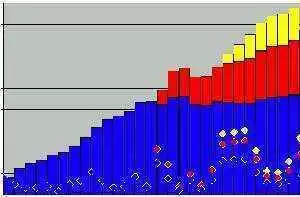Celiac.com 09/16/2013 - Until recently, researchers thought celiac disease was mainly a problem in Northern Europe and Australasia, and uncommon in North America and the Middle East. However, with better data, researchers now regard celiac disease to be equally common in all these places.
Celiac disease is still generally seen as rare in Asia and Sub-Saharan Africa, but a team of researchers wanted to get a better idea of geographical differences and time trends in the frequency of celiac disease.
Celiac.com Sponsor (A12):
The research team included J. Y. Kang, A. H. Y. Kang, A. Green, K. A. Gwee, and K.Y. Ho. They are affiliated with the Department of Gastroenterology, St George's Hospital, London, UK, the Yong Loo Lin School of Medicine at the National University of Singapore, and with the Department of Gastroenterology and Hepatology at the National University Health System in Singapore.
To get the data that would help them to compare geographical differences and time trends, the team conducted Medline and Embase searches covering a period from 1946 to 1980, using the key words: coeliac disease or celiac disease + prevalence, incidence or frequency.
Their data showed significant differences between and within countries in the prevalence and incidence of celiac disease. For example, in all of reported English medical literature, there have been only 24 ethnic Chinese and Japanese patients with celiac disease. Of celiac-associated HLA DQ antigens, DQ2 occurs in 5–10% of Chinese and sub-Saharan Africans, compared to 5–20% in Western Europe. DQ8 occurs in 5–10% of English, Tunisians and Iranians, but in less than 5% of Eastern Europeans, Americans and Asians.
Rates and overall numbers of both clinically and serologically diagnosed celiac disease have risen in recent years. Celiac disease is increasing in frequency, with significant geographical differences.
The team's geographical and temporal differences seem genuine, but a large number of hypothesis and lack of diagnostic facilities have made it difficult to reach any solid conclusions.
Although few cases have been found in Asia and Sub-Saharan Africa, there is a significant prevalence of HLA DQ2 and wheat consumption is about the same as in Western Europe.
It is possible that celiac disease may become more common in these countries in the future.
Source:
- Open Original Shared Link







Recommended Comments
There are no comments to display.